Although the numbers of passerine migrants were a real highlight during the day, some particularly noteworthy sightings included the following: the year's first Pied Flycatcher was discovered in the green lane mid-morning, which is the earliest this species has arrived on the island since one on 7 April 1985; equally early was a Common Redstart discovered at Nant, a week earlier than last year; the first two Ring Ouzels of the year were discovered above Nant, which is conversely a rather late arrival on the island; and the year's first Short-eared Owl of the year graced the west side, before giving open views on one of the earth banks.
The most obvious arrival on the island was that of the multitude of phylloscopus and sylvia warblers, which were particularly concentrated around the withies, Cristin and Nant. Ringing throughout the day gave an indication of just how many birds were actually moving through, and so the following figures are still likely to be large underestimates: 156 Blackcaps, 292 Willow Warblers, 31 Chiffchaffs and three Grasshopper Warblers are the totals at the moment, although these will likely be updated later on.
In addition to the movement of warblers, virtually every other type of common migrant was also on the move! The first 'real' hirundine passage so far this year took place in the calm and sunny conditions, with some 98 Swallows and 35 Sand Martins whizzing northward. Finch passage was also evident, and a Parisian-ringed Lesser Redpoll indicated to the extent of some of the bird's movements. A Common Redpoll was also seen amongst some eight Lesser Redpolls, 21 Goldfinches, two Siskins and a Greenfinch.
Willow Warblers (top two images) were scattered all over the island, moving through the vegetated areas rapidly as the day progressed. Chiffchaffs (lower) were much less numerous.
Ringing
A total of 120 birds were trapped and ringed during the day, 104 of which were ringed before 10am. Willow Warblers and Blackcaps were, predictably, the most abundant species turning up in the mist nets, although there were plenty of other species to break the monotony of the phyllosc and sylvia domination!
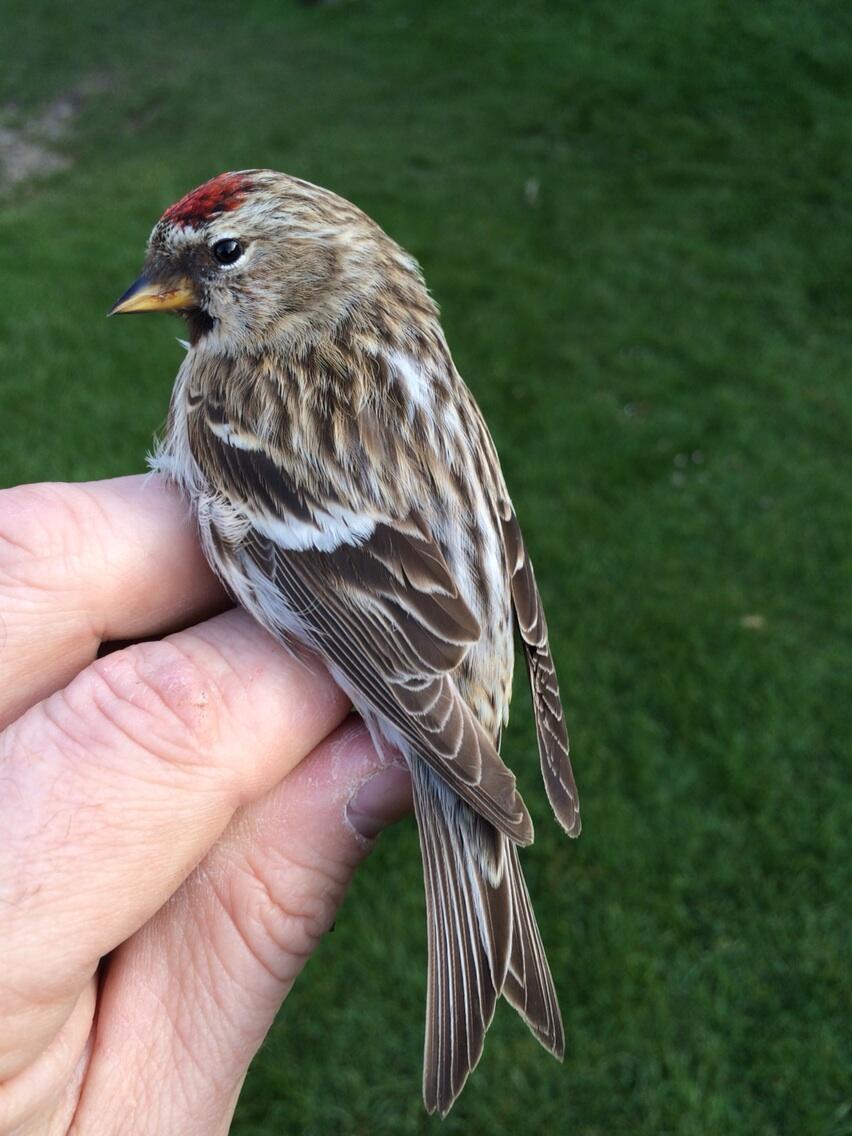
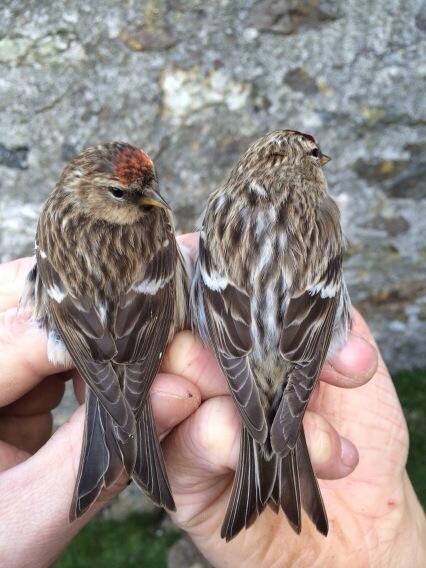
This rather smart Mealy Redpoll was the second to be ringed this year, appearing to be a much heftier bird in the hand than the usual Lesser Redpolls (left hand bird in bottom image), and bearing paler ground colour and wing bars. A wing of 76mm on the Common Redpoll was 6mm longer than the bird on the left (c) Steve Stansfield
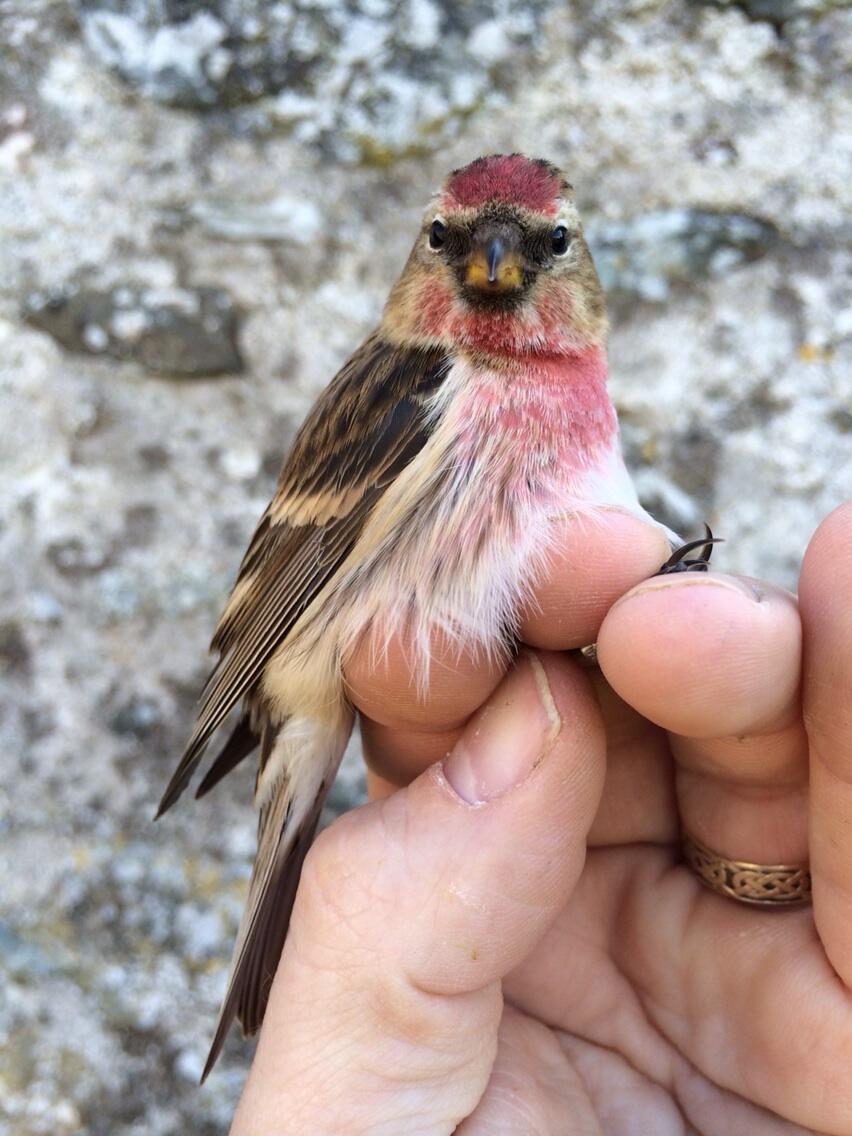
This rather stunning male Lesser Redpoll also found its way into the mist nets (c) Steve Stansfield
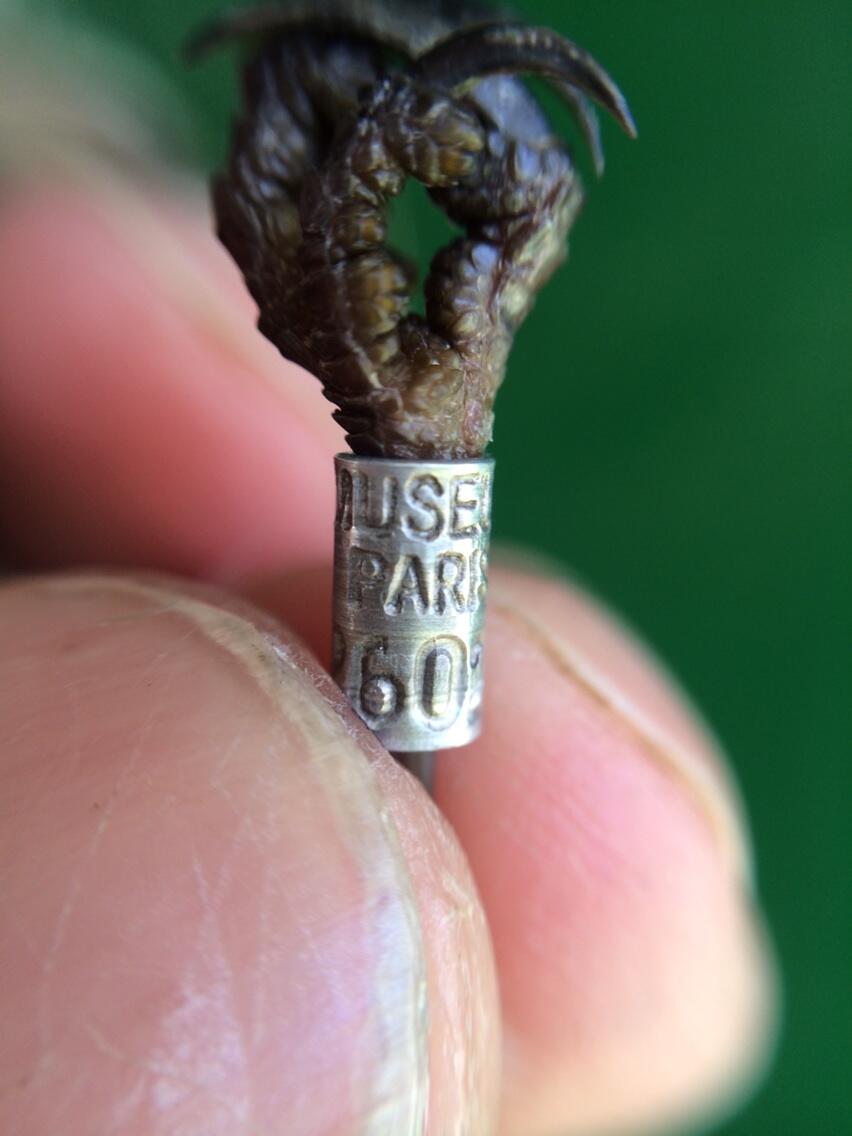
Continuing on the Lesser Redpoll theme, one bird had already been ringed, but not by ourselves...a little further scrutiny revealed that this particular bird had been ringed by a French scheme, with 'Museum Paris' giving a rather obvious clue as to the bird's origins. This is the first foreign 'control' that we have trapped so far this year (c) Steve Stansfield
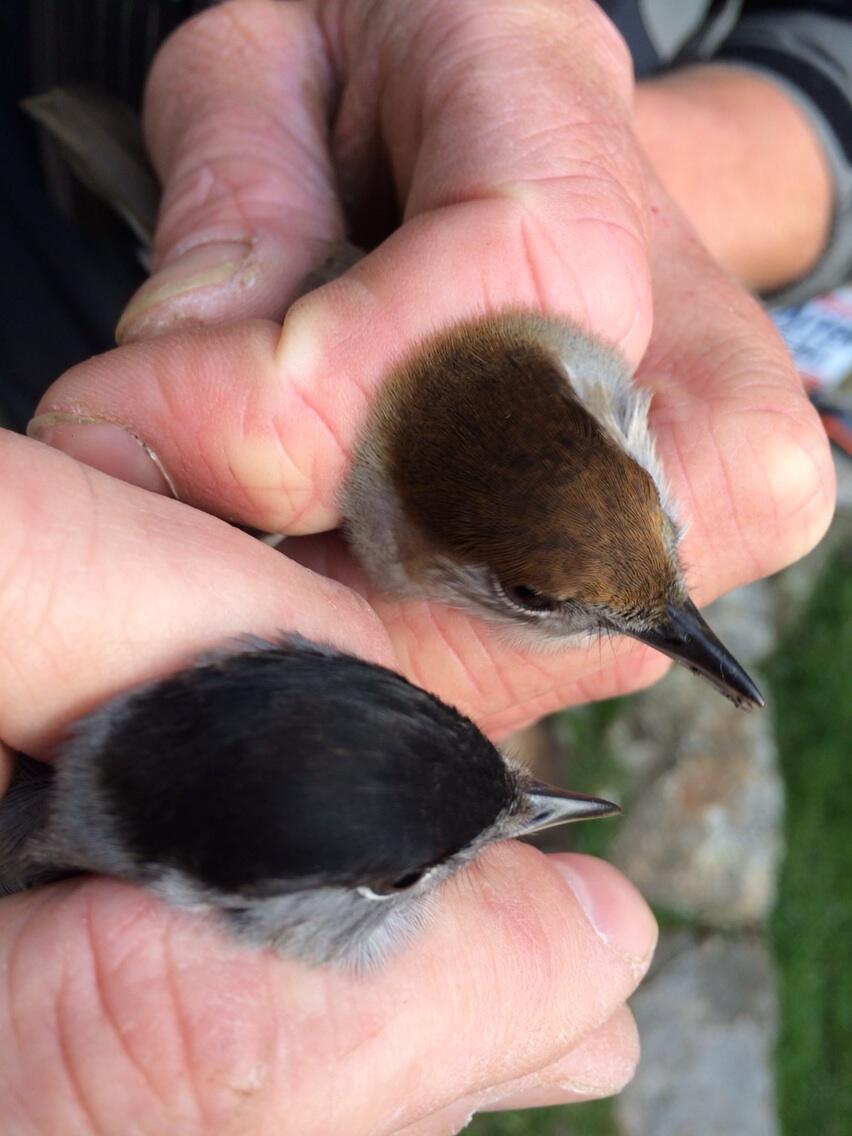
Comparison between male and female Blackcap, although note the atypical dark blotching in the crown feathering of the female bird (c) Steve Stansfield



No comments:
Post a Comment